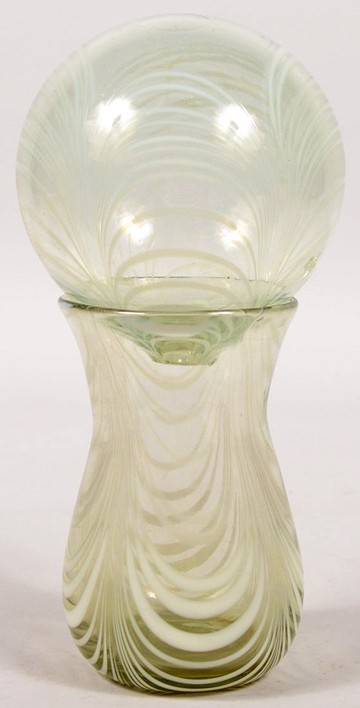 I will be the first to tell you, I am out of my area of specialization in many cases when I post about glass but still very willing to learn from some of the glass authorities who continually post great pieces of Early American Glass on various web sites and facebook. My question here is…
I will be the first to tell you, I am out of my area of specialization in many cases when I post about glass but still very willing to learn from some of the glass authorities who continually post great pieces of Early American Glass on various web sites and facebook. My question here is…
Why are glass balls on Early American Glass pieces?
I suspect it is primarily aesthetic, in that the forms of the combined pieces are pleasing to the eye. For practical reasons, the balls may have protected the contents from insects or spoiling. In many cases there are Witch Balls that were set atop a vase or pitcher because where else can you lay a glass ball without worrying about it rolling off a table?
Read more: Witch Balls – Warding Off Evil Spirits
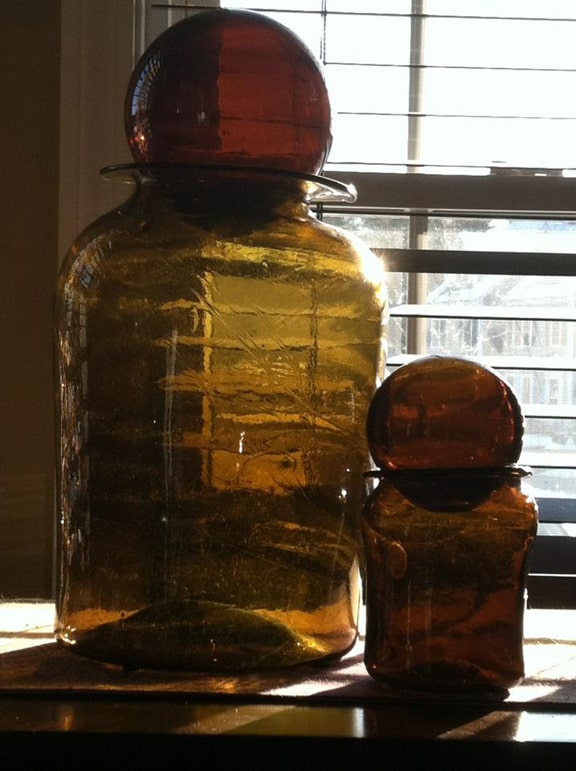
Couple new England storage jars – Daniel Baldwin
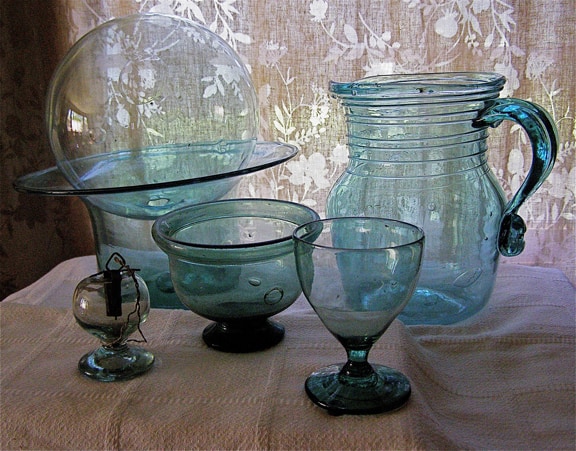
Woody Douglas still-life
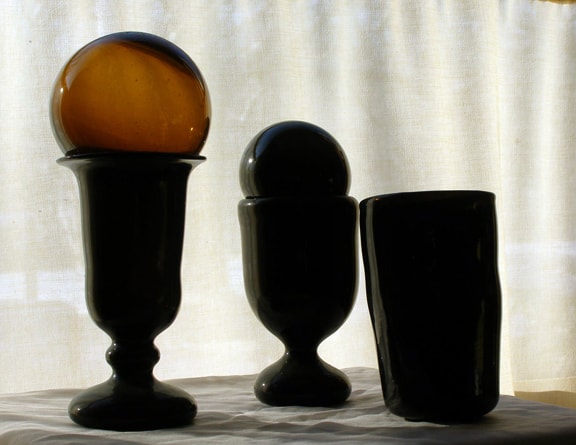
Here is some later freeblown bottleglass circa 1840-1860. The one on the left is amber with a yellow tone and is thought to be NH or Ct., the middle piece is very thick glass in red amber. The last, also very thick, olive green. As you can see the feet on the left and center pieces have been drawn out of the original gather of glass as opposed to being formed and applied separately. This allowed the blower to form the piece without the help of a skilled assistant. These were made when bottle houses had primarily moved to hinge molds to blow bottles as opposed to the skilled manipulation it took to blow say a chestnut or pattern molded flask. Although they lack the grace and artistry of the earlier freeblown they have a funky quality I like. – Woody Douglas
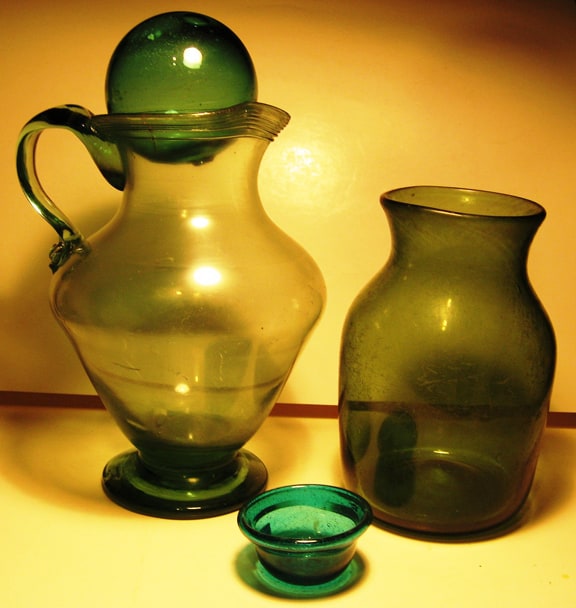
Some early pieces – Rick Ciralli
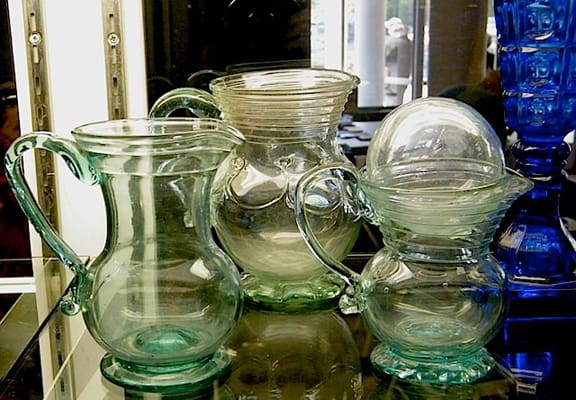
Greenwich Show, three pitchers and a ball – picture Noel Thomas
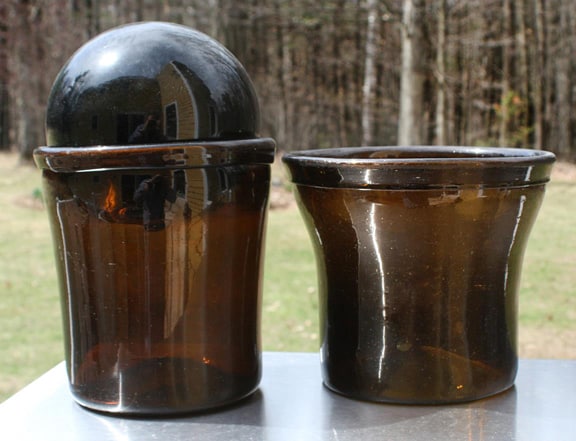
A couple of tall sided bowls with heavy folded over rims… similar dip molds, one example flared out. – Michael George
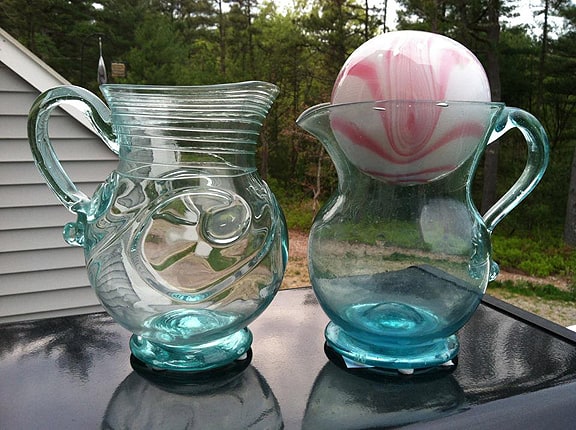
Here is a cool pair….Daniel Baldwin (Lily pad pitcher on left)
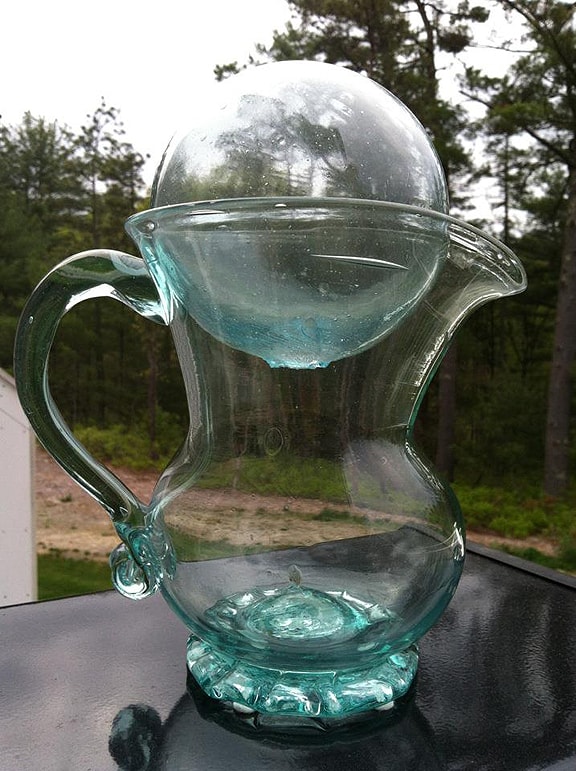
gutsy pitcher, possibly Redford or redwood… Just under 9″ tall – Daniel Baldwin
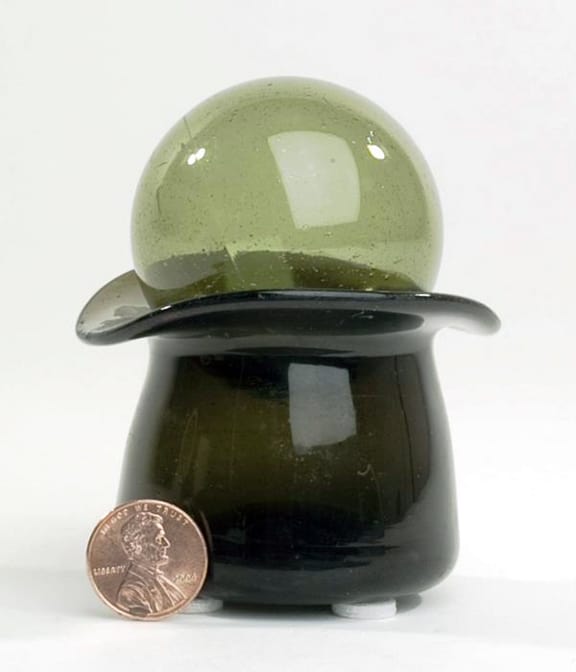
Hat Whimsey and Glass Ball – Rick Ciralli (ex: Daniel Baldwin)
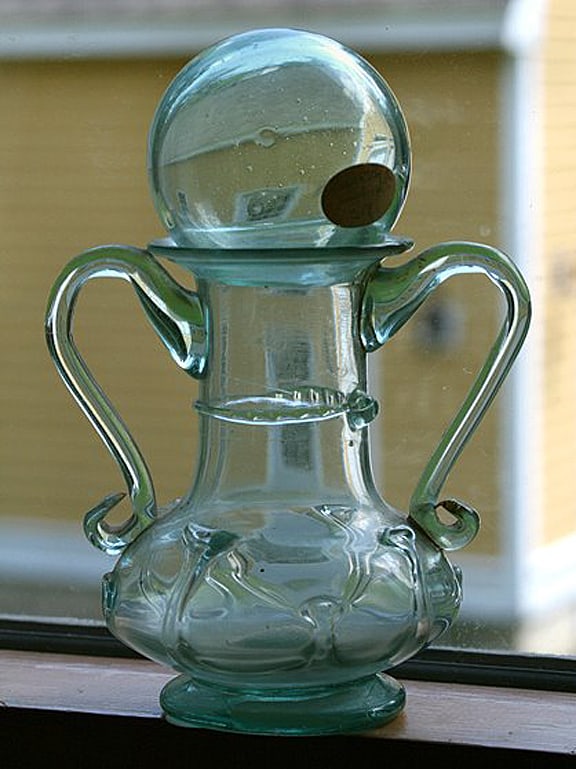
Aqua pitcher with applied rigaree. Likely a Jersey piece. Ex: Kearin. This little guy has so much going on! – Michael George
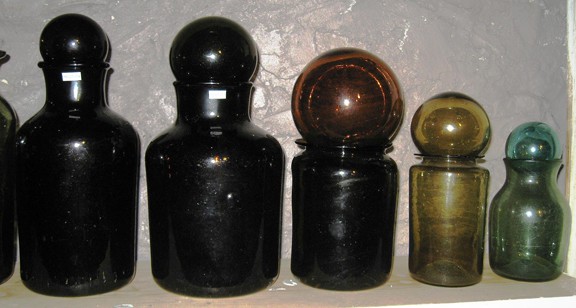
My run of jars with balls! Awful pic, my apologies… – Rick Ciralli
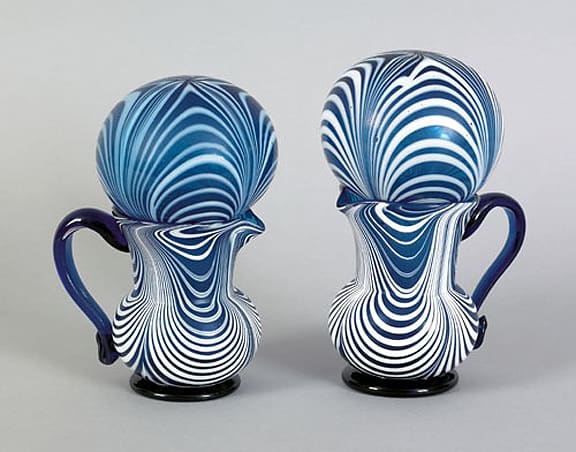
Pair of South Jersey pitchers and witch balls, ca. 1850, sold for $28,080. (Pook & Pook inc.)
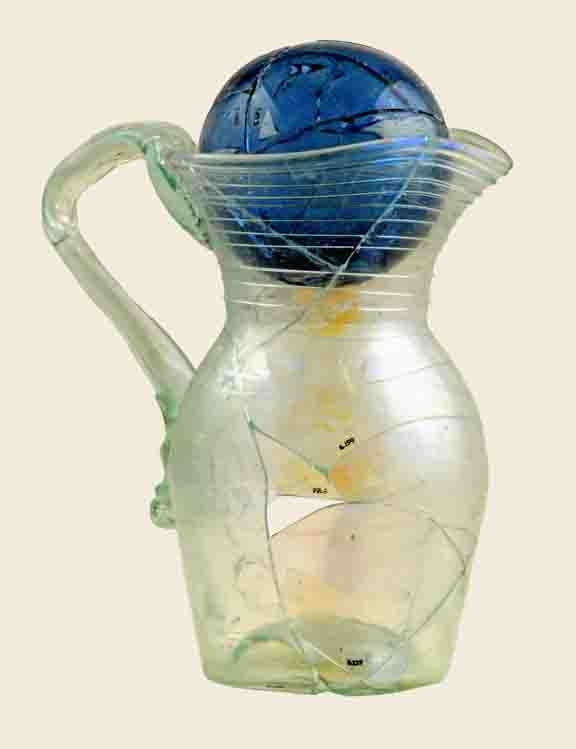
Witch ball used to cap and seal a glass pitcher
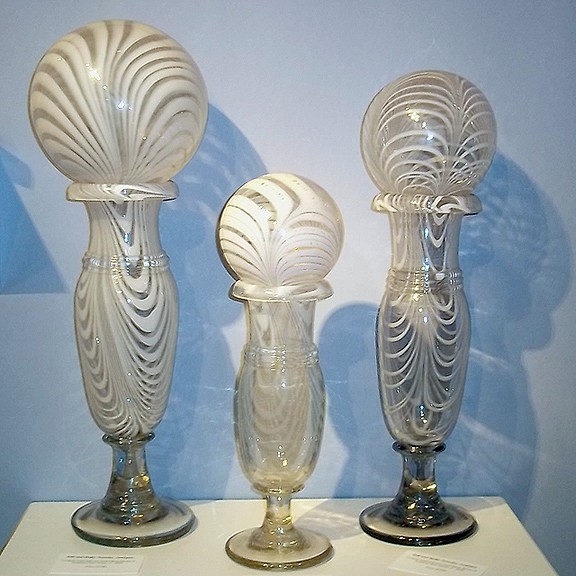
Witch Balls and Stands offered by Jeff and Holly Noordsy
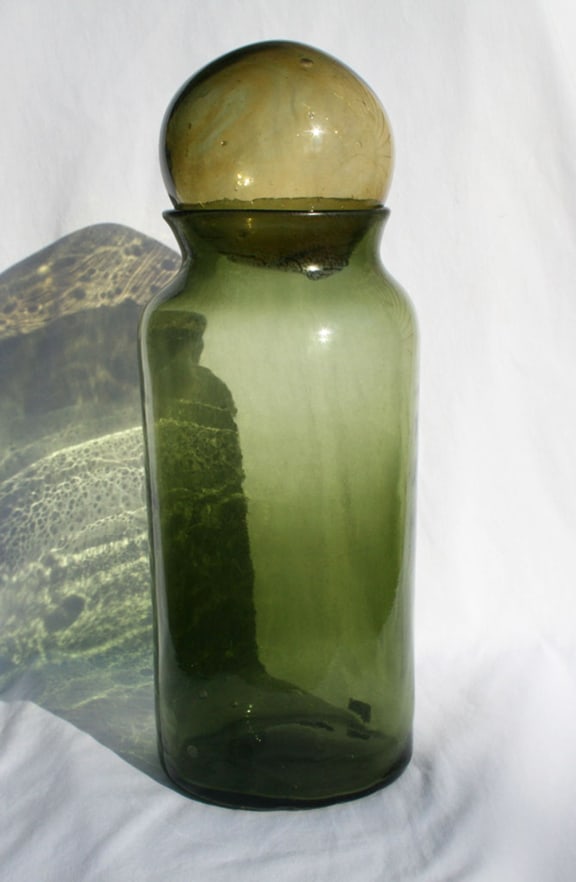
Huckleberry Food Jar with Witch Ball Circa 1860’s. Olive Green. Size: 11″ high x 5″ dia.
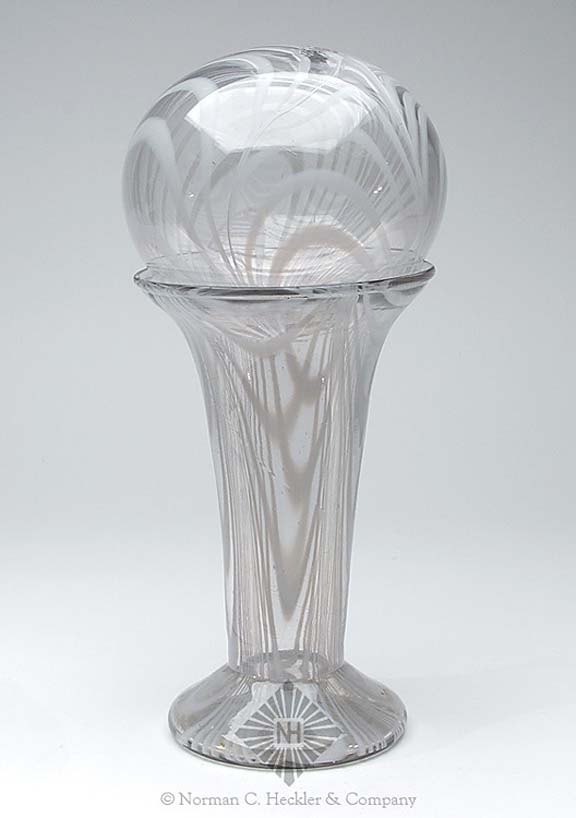
Freeblown Witch Ball And Stand, probably a South Jersey glasshouse, New Jersey, 1850-1860. A hollow ball on a trumpet form base, colorless with profuse white pulled loopings, sheared rim – pontil scar, overall ht. 11 3/8 inches. Fine early decorative freeblown American glass. – Heckler Auction 102
About Ferdinand Meyer V
Ferdinand Meyer V is a native of Baltimore, Maryland and has a BFA in Fine Art and Graphic Design from the Kansas City Art Institute and School of Design. Ferdinand is the founding Principal of FMG Design, Inc., a nationally recognized design consultation firm. Ferdinand is a passionate collector of American historical glass, specializing in bitters bottles, color runs, and related classic figural bottles. Ferdinand is married to Elizabeth Jane Meyer and lives in Houston, Texas, with their daughter and three wonderful grandchildren. The Meyers are also very involved in gardening (Peachridge Gardens), antiques (Peachridge Collections), and early United States postage stamps. Ferdinand is the past three-term president of the Federation of Historical Bottle Collectors, a long-time board member, FOHBC 2021 Hall of Fame, and one of the founding members of the FOHBC Virtual Museum.
 I will be the first to tell you, I am out of my area of specialization in many cases when I post about glass but still very willing to learn from some of the glass authorities who continually post great pieces of Early American Glass on various web sites and facebook. My question here is…
I will be the first to tell you, I am out of my area of specialization in many cases when I post about glass but still very willing to learn from some of the glass authorities who continually post great pieces of Early American Glass on various web sites and facebook. My question here is…





















